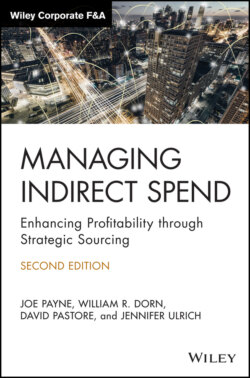Читать книгу Managing Indirect Spend - Joseph Payne, Joe Payne - Страница 37
LINE‐ITEM DETAIL AND GETTING THE MOST FROM YOUR SUPPLY BASE
ОглавлениеEnd users can provide you with a good understanding of supplier relationships and history, service levels, and other critical aspects of the requirements of the product or service being purchased. You may have even collected some information you did not have before, including contracts or purchasing agreements, specifications and forecasts, or other reports that end users have available. This information is a necessary part of the analysis process, but the most critical piece is probably still missing—line‐item detail of purchases. Looking at your AP or purchase order (PO) data probably does not help. The descriptions in that data are likely to be as inconsistent as the supplier name and transactions at the invoice level. If you have a good inventory requisition system or have implemented a procure‐to‐pay system, you are starting off in a better position than most, but the system may not include all the data you need beyond unit price, such as freight, terms, and additional charges.
You can collect the data that resides within your organization by pulling invoices and manually entering the information into a spreadsheet. Depending on the category and the level of centralization within your organization, this can be a very tedious process and, without an army of interns at your disposal, could extend the sourcing timeline substantially.
The most efficient way to gather the requisite line‐item detail is to request reporting from your suppliers directly. While most companies do not keep good records of the items they buy (particularly for nonproduction purchases) all organizations keep excellent records of what was sold.
Almost all of your suppliers have line‐item details for everything they have sold to your organization and can provide reports in spreadsheet format detailing those purchases. Some, however, are naturally reluctant to do so. Suppliers understand that a customer looking for data of this nature is typically seeking to reduce prices, either through a one‐off negotiation or as part of a bidding and sourcing process. With that in mind, you should consider this request for information as the first step in negotiations with your incumbent supplier. Be prepared for one of three responses to your request: acceptance, avoidance, or pushback.
